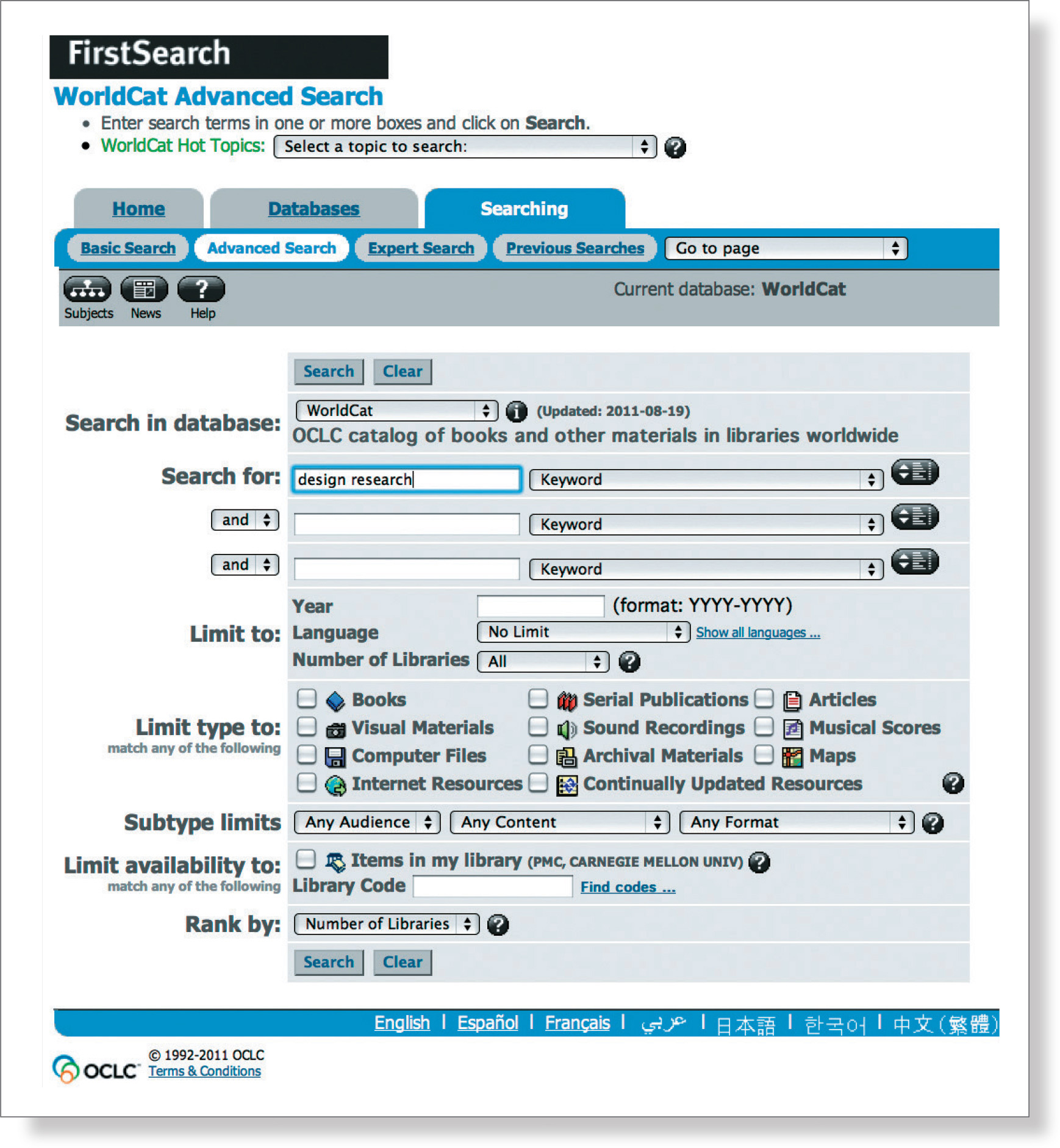RESEARCH METHOD
74 Secondary Research

Secondary research consists of information collected and synthesized from existing data, rather than original material sourced through primary research with participants.
While human-centered design generally implies primary research with users, secondary research can also be a critical component of the project, establishing what has already been done and what hasn’t, gathering comparison data, and helping to suggest a research direction or methods that should be used in the current study. Secondary research is sometimes referred to as desk research, in contrast to primary research conducted as fieldwork, or empirical research. Secondary research is valuable as a relatively low-cost method, although it can be time consuming.
Sources of secondary research may include books, research papers, journal articles, and conference papers, as well as records and statistics from government, nongovernmental organizations (NGOs), or any number of other sources or archives. For designers, useful material to be sourced can also include precedent projects, products or case studies documented in various ways, photographs, maps, diagrams, and other visual support records. The Internet has expedited the process of secondary research and access to online databases, but caution needs to be exercised in establishing the credibility of sources.
Secondary research is traditionally summarized in systematic reviews, or literature reviews, with full citations of sources. While these reviews are most commonly communicated in written reports, in design, secondary research can also be collected into visual summaries for shared viewing, sorting, synthesis, and the crafting of narratives. Recently, blogs have become common repositories for collecting secondary research, facilitating the organization of text, visual references, and source links, in a format convenient for sharing.
Secondary research is an excellent method for establishing definitional boundaries of the design project, because it identifies what precedents exist and where there may yet be opportunity gaps. As a component of exploratory research, secondary research will contribute an essential component of groundwork to aid in the understanding of the design research and user territory under investigation.
Further Reading
Booth, Wayne C., Gregory G. Colomb, and Joseph M. Williams. The Craft of Research, 3rd ed. Chicago, IL: The University of Chicago Press, 2008.

The Worldcat database allows users to search the collections and services of more than 10,000 libraries worldwide, including the option to select specific media types.
© 2011 OCLC Online Computer Library Center, Inc. Used with Permission.
Firstsearch and WorldCat are registered trademarks/service marks of OCLC.
